A complete learner’s guide to Caro Kann Defense, a popular defense against the King’s Pawn Opening.
The Caro-Kann Defense starts with the moves:
- e4 c6.
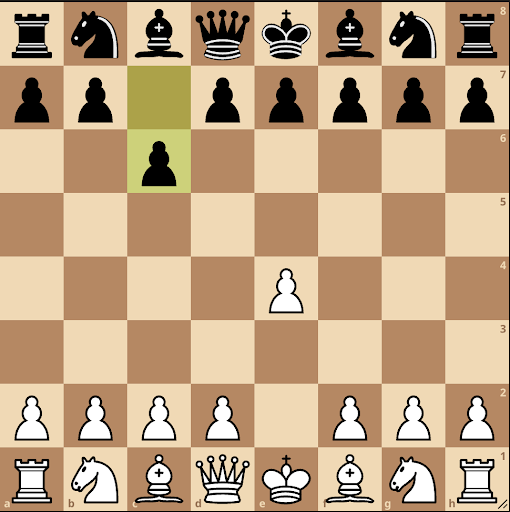
This began after Horatio Caro and Marcus Kann put forward a strong pawn arrangement for Black with good positioning. Players using the Caro-Kann strategy try to build a base for their later attacks by strengthening their position in the Opening. It is a Semi-Open Opening Game and is considered to set a solid base for further development. The strong pawn positioning in the Opening paves a path for a strong pawn chain if the game leads to an End Game.
The Caro-Kann defence is very similar to the French Defence without the hindrance of Black’s light-squared Bishop.
General Concepts
Pawn Structure dynamics form the Key concept of the Caro Kann Defense. The whole premise of Caro Kann is based on the idea behind the French Defense: Black prepares to advance the d pawn to d5. The final goal is to create a very strong c6-d5 pawn chain and to challenge White’s space advantage and attack White’s Kingside. However, the only disadvantage for Black is – that after playing d5, Black cannot bring the c6 pawn to c5.
History and Origin
The opening takes its name after the English player Horatio Caro and the Austrian player Marcus Kann who analyzed it in 1886. Kann scored an impressive 24-move victory with the Caro–Kann Defense against German-British chess champion Jacques Mieses at the 4th German Chess Congress in his game at Hamburg in May 1885.
Its first appearance in a published game came between two unknown players in 1845, while the analysis by Caro and Kann came in the 1880s.
How to play against the Caro-Kann?
The Advance Variation scores 43% for White against 30% for Black. The Fantasy Variation, at 44% to 33%, fares almost as well, but much of its value is as a surprise weapon. Also a surprisingly effective way for White to meet the Caro-Kann is with 2.c4 instead of 2.d4. It may be an even better surprise weapon than the Fantasy Variation, as White still wins 44% of the time but only loses 23%.
Mainline
- e4 c6
- d4 d5
- Nc3/Nd2
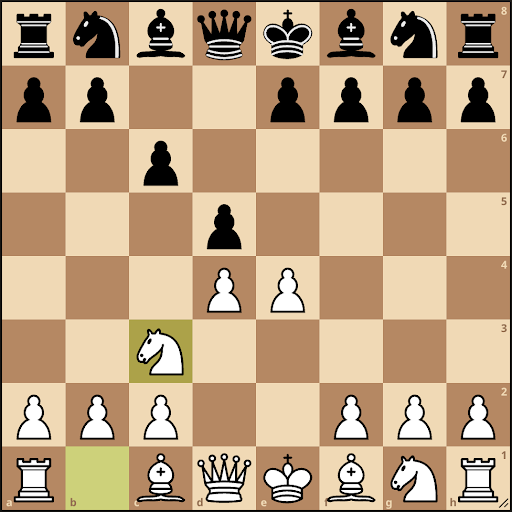
White either plays Nc3 or Nd2 as a response to Black’s d5. Black’s most classic response is to play dxe4 which is often referred to as the Capablanca Variation.
3.Nc3 (or 3.Nd2) dxe4
4.Nxe4 Bf5
This was long considered to be the best variation for both sides in the Caro–Kann. The defense gets its ‘solid opening’ status from this variation, due to the strong pawn structure and the timely occupation of the ‘d5’ square. After d5 – White can transpose the opening into multiple variations:
- White can advance with e5 – The Advance Variation
- White can defend the e-pawn with 3. Nc3 or 3. Nd2 – The Classical Variation
- White can exchange on d5 and quickly play c4 – The Panov-Botvinnik Attack
- White can exchange on d5 without following up with c4 – The Exchange Variation
- White can play f3, adding defense to the king’s pawn – The Fantasy variation
The Advance Variation
This variation has been gaining popularity after many years of being considered to be inferior, mainly because the strategic destruction suffered by Aron Nimzowitsch playing as White against José Capablanca in one of their games during a tournament in New York in the year 1927. White immediately claims a spatial superiority with Bf5 allows Black to activate his light square Bishop unlike the French Defense. Black will later play e6 and c5, undermining White’s pawn chain at its very base.
This allows Black to develop pieces late, and White occasionally attempts an early attack at the center before Black castles. Sometimes White tries to harass the light-squared Bishop by playing g4.
- e4 c6
- d4 d5
- e5 Bf5

The Exchange Variation
It is not symmetrical like the French Defense Exchange Variation, but here, White has a semi-open ‘e’ & ‘c’ file. Black hopes to put a Rook on the c-file sooner or later, and if White plays c3 Black can play b5. If white plays cxd4, their d-pawn would then be isolated. White’s d-pawn would then become isolated if they play cxd4. White wants to put pressure on the e-file, and may play f5 eventually.
- e4 c6
- d4 d5
- exd5 cxd5
- Bd3
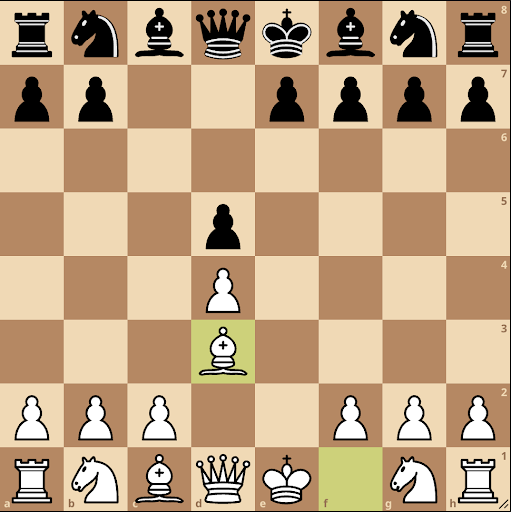
The Fantasy Variation
This variation, also called the Tartakower Variation leads to very tricky and tactical games where multiple attacks can happen. White’s idea is to strengthen his e4 pawn with his f3 pawn. The drawback for White by playing f3, is that he also ends up blocking his own knight from developing and weakening the squares around the king.
- e4 c6
- d4 d5
- f3 e6
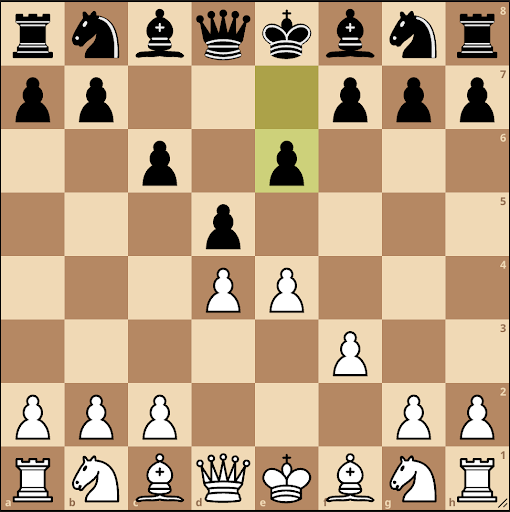
Traps
Here White Sacrifices a Bishop that White regains and ends up in an attacking position and a prospective win for White.
- e4 c6
- d4 d5
- f3 dxe4
- fxe4 e5
- Nf3 Bg4
- Bc4 Ne7
- Bxf7+ Kxf7
- Ne5+ Ke8
- Qxg4
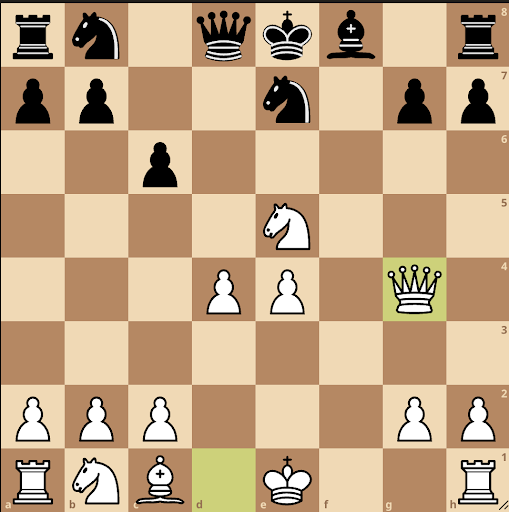
- e4 c6
- Nc3 d5
- Nf3 dxe4
- Nxe4 Nf6
- Qe2 Nbd7??
- Nd6# (1-0)
- e4 c6
- d4 d5
- Nd2 dxe4
- Nxe4 Nd7
- Ng5 h6
- Ne6 Qa5+
- Bd2 Qb6
- Bd3 fxe6
- Qh5+ Kd8 (If Black plays 9… g6 then 10. Bxg6+ Kd8 11. Ba5)
- Ba5 Ngf6
- Bxb6+ (1-0)
- e4 c6
- d4 d5
- Nc3 dxe4
- Nxe4 Nd7
- Bc4 Ngf6
- Ng5 e6
- Qe2 h6
- Nxf7 Kxf7
- Qxe6+ Kg6
- Bd3+ Kh5
- Qh3# (1-0)
Grand Master Games to Refer to:
Books to Refer to:
- The Caro-Kann the Easy Way by Thomas Engqvist
- Play the Caro-Kann – a complete chess opening repertoire against 1. e4 by Jovanka Houska
- Win with the Caro-Kann by Sverre Johnsen and Torbjorn Ringdal Hansen
- Starting out: the Caro-Kann by Joe Gallagher
FAQ
1. Are there any famous players known for using the Caro-Kann Defense?
The Caro-Kann Defense has been skillfully utilized by numerous formidable players such as Anatoly Karpov, Viktor Korchnoi, and Vladimir Kramnik, who have all demonstrated its effectiveness. This particular defense continues to be a preferred strategy across all levels of competition. At the 1927 New York tournament, world champion Jose Raul Capablanca scored two wins with three draws and no losses by playing Caro Kann. Mikhail Botvinnik was the first player to use the Caro-Kann in a world championship match against Vassily Smyslov. Tigran Petrosian also used it to defend his title against Boris Spassky in 1966. By then, the Caro-Kann was well established as one of Black’s most viable options against 1.e4. Magnus Carlsen used it against Viswanathan Anand in the 2013 World Championship. The Caro-Kann is currently a favorite of Alireza Firouzja.
2. What are the main ideas behind the Caro-Kann Defense?
The Caro-Kann Defense is built upon the important concepts of establishing strong pawn formations, strategically breaking through the center, and finding opportunities for counter-attacks. Rather than directly challenging for control of the center, Black typically takes an indirect approach to dominate it.
Learn Chess. Learn Life Lessons.
Leran Chess from the GrandMasters.
Help your child improve their Strategic Thinking, Critical Thinking, Time Management, etc. through the game of Chess.

This article is technically edited and reviewed by Grand Master Marian Petrov.

CHESS KLUB offers chess classes for kids and adults of all levels. Our coaches include FIDE, National, International and Grand Masters among many.
We offer Online and Classroom coaching.
CHESS KLUB has coaching centers in the US and India now!
More on Sicilian Defense
More Chess Openings
Learn Chess from the Masters
Do you want to see your kid excel in Chess?



